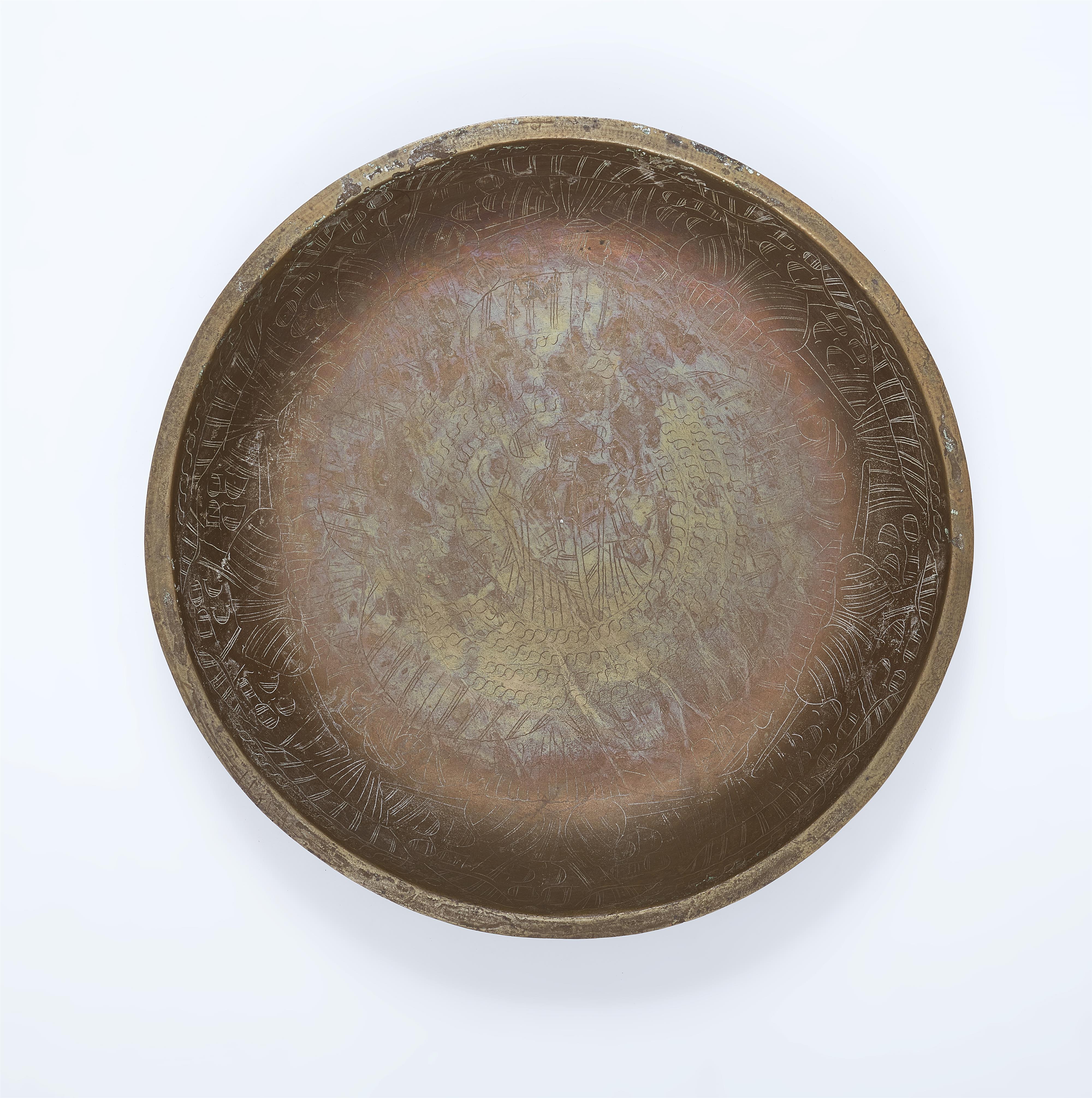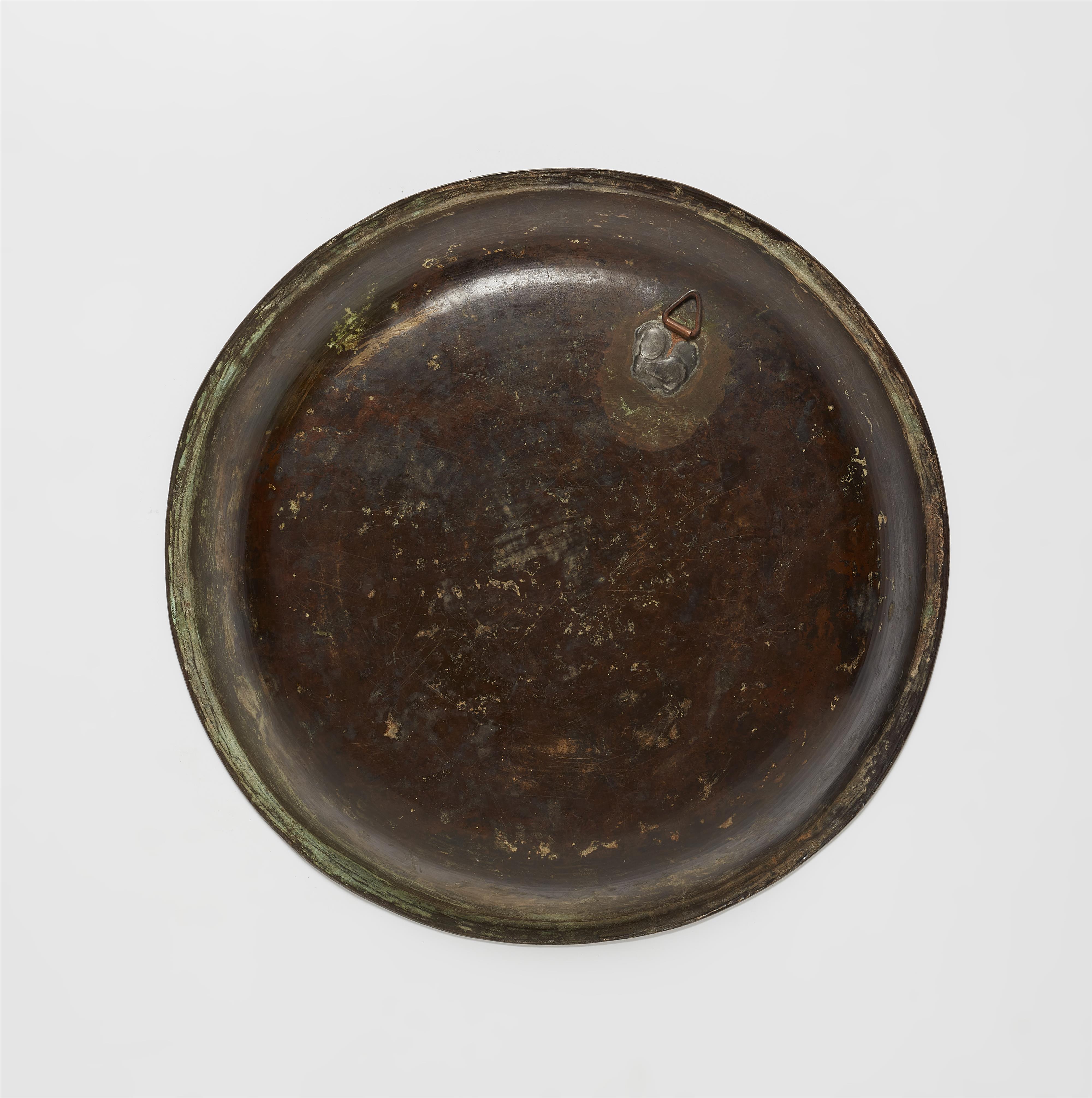A Romanesque engraved bronze dish
Copper alloy with shiny dark brown patina and minor verdigris. Shallow turned, chased and chiselled bowl with a concave raised rim, folded and bent edge. The well fully engraved with a demi-figure with head turned to the right and the inscription "SVPERBIA", framed by four rings of braided ornament. Grouped radially around it three busts with engraved inscriptions: "IDOL(A)TRIA" (idolatry), "INVIDIA" (envy), "IRA" (anger) and "(L)UXURIA" (hedonism), many letters emphasised by double strokes. The rim with three further large foliate ornaments with illegible inscriptions. With a bail soldered to the underside. H 6, diameter 32.7 cm.
Germany (possibly Saxony), 12th C.
This dish belongs to the group of objects that used to be known as Hanseatic bowls. These are bronze or copper vessels, generally from the 12th and 13th centuries, which, according to medieval manuscripts, were associated with the Hanseatic cities. They originate mainly from the region that stretched from the Baltic Sea across the Lower Rhine to England and was dominated by trade with the free cities. The designation of the Hansa bowls has been obsolete since the publication of the legendary art historian Weitzmann-Fiedler, who proved in 1981 that these objects in fact have no verifiable connection with the Hanseatic cities at all.
However, this bowl clearly belongs to the group known as the vice bowls, even if "idolatria" - emphasised here - cannot technically be assigned to the canon of the seven Christian deadly sins. Ulrich Müller describes this type as "bowls with incorrect iconography or even faulty inscriptions". He surmises that the utensils, which were probably used for hand washing, not only demonstrated social prestige, but also conveyed basic religious knowledge. "The topic of good and evil was present in everyday preaching practice. The hand washing seems (...) to have offered the opportunity to introduce this content during the meal, perhaps also when greeting or bidding farewell to visitors, and to demonstrate it on the part of the users." (ibid. p. 42)
Provenance
Archaeological find from the surroundings of Bautzen, Oberlausitz, recovered in 1947, subsequently in family ownership.
Literature
This type published in Müller, Gravierte romanische Bronzeschalen und Schachfiguren des 11./12. Jahrhunderts, in: Archäologie des Mittelalters und der Neuzeit 9.1998, p. 39 ff., ill. of the type p. 41.
S.a. Weitzmann-Fiedler, Romanische gravierte Bronzeschalen, Berlin 1981.
S.a. Müller, Zwischen Gebrauch und Bedeutung: Studien zur Funktion von Sachkultur am Beispiel mittelalterlichen Handwaschgeschirrs, Bonn 2006.
Two further, identically crafted, female allegories of vices in the collection of The Metropolitan Museum of Art New York, inv. no. 65.89. and in the Germanisches Nationalmuseum Nuremberg (in Mende, Die mittelalterlichen Bronzen, Nuremberg 2013, no. 100).




